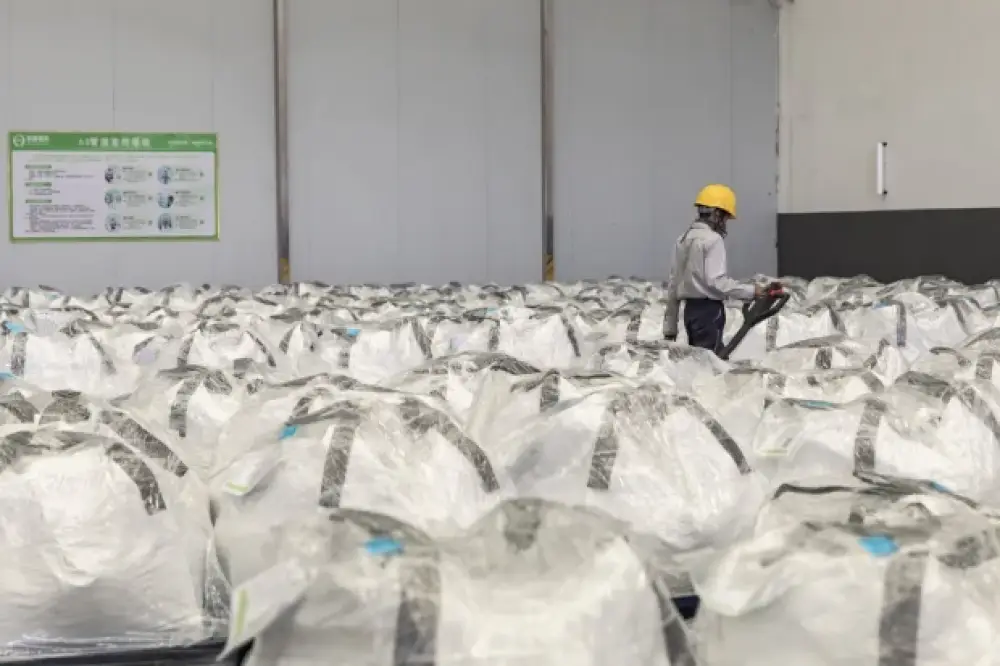
Trung Quốc tăng tốc thâu tóm mỏ khoáng sản toàn cầu với số thương vụ đạt mức cao nhất trong hơn một thập kỷ
-
Năm 2024, Trung Quốc thực hiện 10 thương vụ khai khoáng trị giá trên 100 triệu USD, đạt mức cao nhất kể từ năm 2013, theo dữ liệu từ S&P và Mergermarket. Viện Griffith Asia xác nhận đây là năm bận rộn nhất với đầu tư và xây dựng mỏ ở nước ngoài từ trước đến nay.
-
Động lực chính là nỗi lo địa chính trị ngày càng xấu đi, đặc biệt khi Trung Quốc bị hạn chế đầu tư vào các quốc gia như Canada và Mỹ, dẫn đến việc các công ty Trung Quốc gấp rút thực hiện các thương vụ M&A trước khi "cửa sổ cơ hội" đóng lại.
-
Ví dụ gần nhất là Zijin Mining tuyên bố mua lại mỏ vàng tại Kazakhstan trị giá 1,2 tỷ USD (~1,8 tỷ AUD), và thương vụ Baiyin Nonferrous Group mua mỏ đồng và vàng Mineracao Vale Verde tại Brazil từ Appian Capital với giá 420 triệu USD.
-
Các nhà phân tích dự đoán hoạt động mua bán sáp nhập sẽ tiếp tục tăng trong vài năm tới, do Trung Quốc cần nhiều khoáng sản cho sản xuất công nghệ cao, bao gồm pin và năng lượng tái tạo – phù hợp với định hướng chuyển dịch sang công nghiệp công nghệ cao.
-
Mặc dù Trung Quốc thống trị chuỗi chế biến khoáng sản như đất hiếm, lithium, cobalt, nước này vẫn phải nhập khẩu phần lớn nguyên liệu thô từ nước ngoài.
-
Phương Tây, đặc biệt là Canada và Australia, ngày càng thận trọng với đầu tư Trung Quốc vào các mỏ trong nước, do tính chất chiến lược của những khoáng sản này trong sản xuất xe điện, bán dẫn và năng lượng tái tạo.
-
Trung Quốc được cho là đang "gạt phương Tây" khỏi nhiều mỏ chiến lược, bằng cách sẵn sàng chi trả cao hơn và chấp nhận rủi ro lớn hơn. Ngoài ra, chính phủ Trung Quốc đã nới lỏng cạnh tranh nội bộ, cho phép các công ty trong nước thi đấu lẫn nhau trong các thương vụ quốc tế, thay vì chỉ chọn một đại diện như trước.
-
Một số công ty Trung Quốc tích cực nhất gồm CMOC, MMG, Zijin Mining, trong khi các ngân hàng Trung Quốc cũng cấp hàng tỷ USD tín dụng cho các dự án khai khoáng tại các nước đang phát triển.
-
Tại châu Phi, đặc biệt là Mali, Trung Quốc đang tận dụng làn sóng dân tộc hóa tài nguyên, khi các chính phủ quân sự tại đây tìm cách kiểm soát tài sản của phương Tây và yêu cầu tăng thuế tài nguyên. Các công ty Trung Quốc thường chấp nhận chia sẻ lợi nhuận thấp hơn, miễn là họ có thể tiếp quản quyền vận hành mỏ.
📌 Năm 2024, Trung Quốc thực hiện 10 thương vụ khai khoáng lớn trị giá trên 100 triệu USD, mức cao nhất từ 2013. Các tập đoàn như Zijin Mining, Baiyin và CMOC đang tăng tốc đầu tư ở Kazakhstan, Brazil và châu Phi, nhằm đảm bảo nguồn nguyên liệu chiến lược như lithium, đất hiếm, cobalt. Trước làn sóng bài Trung tại phương Tây, Bắc Kinh chuyển trọng tâm sang các nước đang phát triển và chấp nhận rủi ro để giữ thế thống trị chuỗi cung toàn cầu.
https://www.afr.com/world/asia/china-snaps-up-mines-around-the-world-in-rush-to-secure-resources-20250706-p5mcwx
China snaps up mines around the world in rush to secure resources
Thảo luận
Follow Us
Tin phổ biến



